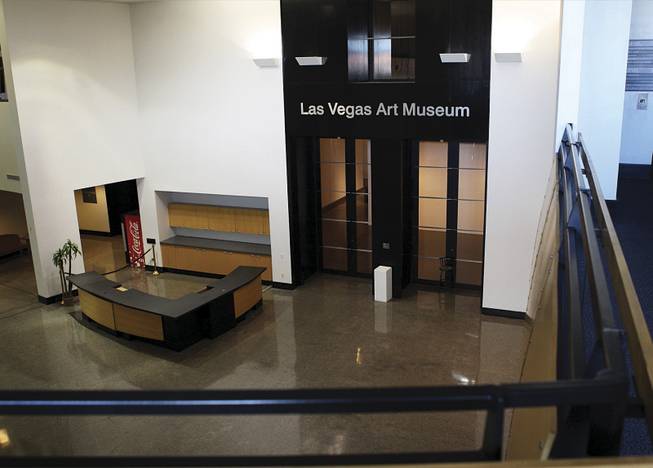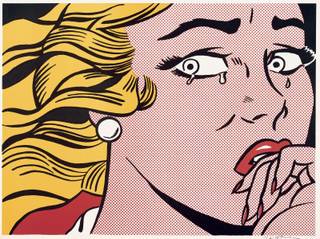
The Las Vegas Art Museum closed recently, unable to raise enough money to remain viable and unwilling to “go back to running a museum with third-rate posters,” says its board president.
Thursday, March 12, 2009 | 2 a.m.
Related story
Sun Archives
- LVAM is closing, but it don't bother Jim (2-22-2009)
- Strapped Las Vegas Art Museum plans to shutter (2-21-09)
- Las Vegas Art Museum closing next week (2-20-09)
- New, on display, from L.A. (12-12-2008)
- With Lumpkin’s exit, museum must be ‘creative’ to survive, interim director says (12-5-2008)
- Museum gift shop will be missed, but it’s gone for good reasons (12-3-2008)
Beyond the Sun
Las Vegas Art Museum
The Las Vegas Art Museum closed indefinitely last month because it was broke. After 59 years, there was no endowment, no public funding and little community involvement.
The abrupt closure sparked heartache and anger among longtime supporters. But the fact that there are only about 1,000 museum members and little attendance in a region of 2 million residents illustrates the disconnect between the Las Vegas Art Museum and the community.
How art museums take root and establish themselves in a community varies. The Las Vegas Art Museum had never done well. Its later mission as a contemporary art institute attracted new board members and national attention, but failed to grow the museum in the community before the recession hit.
“It’s not like we didn’t reach out,” board President Patrick Duffy says. “Everybody comes out of the woodwork now to say, ‘I can’t believe it,’ but where were their checkbooks?”
Duffy says the Las Vegas Art Museum, in a last-minute effort, tried forming partnerships with other institutions, including Opportunity Village. The board also considered hanging the permanent collection at the museum, which operates out of a library on West Sahara Avenue. The museum owns about 170 works, including pieces from the “Las Vegas Diaspora” exhibit and 50 from the Herb and Dorothy Vogel collection, held in storage. Duffy says displaying the permanent collection would have cost $500,000 annually and been poorly curated.
And the alternative? “We were not going to go back to running a museum with third-rate posters, like it was 10 years ago,” Duffy says. “You have to give people a reason to come.”
Better to just fold, the board decided.
Ellen Grossman, a former Las Vegas Art Museum staff member, says the museum may have tried too hard to grow too fast.
Board and staff members wanted to build a facility at a more central site to encourage support and attendance, but there were more immediate issues. Professional staff were hired and the payroll ballooned from $232,602 to $593,944 from 2006 to 2007, at a time when revenue remained stagnant at $1.6 million, according to federal tax statements.
Other hurdles: the museum’s location on the far west side of the valley discouraged visitors from across town, and its small size required it to close during installations, which complicated marketing.
On three occasions Libby Lumpkin, then-executive director of the Las Vegas Art Museum, personally drove tourists back to the Strip after they had paid cab fare to go to the institution, only to find it closed.
Mark Hall-Patton, Clark County Museum administrator and vice president of the Nevada Museums Association, said developing a successful museum requires patience.
He moved to the valley when the population was just under 1 million, which elsewhere might have provided an adequate base to support a cultural infrastructure. But he said Las Vegas was too young and transient to provide strong local support, and that tourists preferred the Strip’s attractions to cultural institutions. Some say a contemporary museum is a harder sell.
“The Museum of Modern Art didn’t get founded until 300 years after the city (of New York),” Hall-Patton said. “And it took another century to grow. For us to sit there and say, ‘We should have that,’ well, we will in a century.”
Lumpkin wanted to quicken the process with a cutting-edge contemporary art museum at a location where it could better tap the high-end tourist trade.
“It seemed like a no-brainer,” Lumpkin says. “Las Vegas is a place artists love to come to because of the visual spectacle of the Strip. Hotels are putting recording studios in. This place could be alive with creativity.”
Art certainly boosted tourism in Miami Beach. Art Basel Miami Beach started in 2001 and draws more than 35,000 to the main fair and satellite fairs. Hotels and restaurants are booked. Art in the community became important enough that Miami-Dade voters approved a bond in 2004 that included $100 million toward its art museum.
Las Vegas Art Museum board and staff members believe the museum would have survived had it not been for the disastrous economy.
The Nevada Museum of Art in Reno, the state’s oldest cultural institution, is booming, with locals providing 70 percent of its gate and a membership seven times that of Las Vegas’ art museum, despite the region’s smaller population.
Its four-level, 55,000-square-foot building opened in 2003 and houses 1,900 works, including modern art, contemporary art and landscape photos of the American West. It recently launched its Center for Art and Environment.
Amy Oppio, the museum’s deputy director, attributes its success largely to its education and community outreach programs that hit every socioeconomic demographic. “When people contributed to the bricks and mortar, they really felt like they were contributing to the community as well.”
The Phoenix Art Museum, founded nine years after the Las Vegas Art Museum, also is doing well. Director Jim Ballinger attributes its success to its diverse collection and exhibits. It has 18,000 works and a 203,000-square-foot building.
The much smaller Scottsdale (Ariz.) Museum of Contemporary Art, which shows mostly touring and showcase exhibits, averages about 40,000 visitors a year, almost triple the figure for the Las Vegas Art Museum. The Palm Springs Art Museum, established in 1938, has a mostly contemporary collection and is doing well this year following a two-year remodeling effort and revamped programming.
Stellar programming isn’t the end-all, however. The struggling Rose Art Museum at Brandeis University in Massachusetts has an estimated $350 million collection of works by artists such as Willem de Kooning, Jasper Johns, James Rosenquist and Andy Warhol — but wasn’t attracting significantly more visitors than the Las Vegas museum.
The Las Vegas effort began as art league in 1950, became the Las Vegas Art Museum in 1974 and in 1997 moved from Lorenzi Park to the Sahara West Library.
For decades the museum lacked a professional staff, accreditation, assets and a coherent mission.
In revamping the museum, Lumpkin had hoped to secure public funding to avoid the problems at the Museum of Contemporary Art Los Angeles, which lacked government support. A 2006 financial survey by the American Association of Museums found that art museums, on average, receive 14 percent of their revenue from government funding, 46 percent from private donations, 24 percent from earned income and 15 percent from investments.
The Las Vegas Art Museum is a private nonprofit organization that received only 3 percent of its revenue from public funds.


Join the Discussion:
Check this out for a full explanation of our conversion to the LiveFyre commenting system and instructions on how to sign up for an account.
Full comments policy